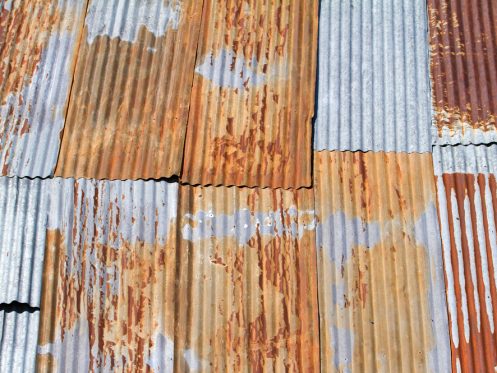Metal roofing has a reputation for being durable and reliable. While the installation cost is higher, metal is still the most durable roofing material on the market. But, a lot of people think it will last a long time even without maintenance. If they’re properly maintained and are in the right environment, a metal roof can last at least 50-70 years. But, that doesn’t mean it won’t ever experience normal wear and tear. As a homeowner, you should know the signs that you need to replace your metal roof because it can protect your home from any additional problems. All types of roofing materials will deteriorate at some point no matter what kind of materials are being used.
Here are some of the signs that you metal roof is getting old.
#1: Signs of Deterioration
All roofing materials will show signs of deterioration after a certain amount of time. For most metal roofs, it will start to happen after about 20-30 years after it has been installed. While many manufacturers claim that metal roofing can last for longer than 30 years, it’s often not the case. If you take certain environmental factors into consideration, your roof could get worn down from rain, high humidity, high salt air conditions, and other factors. If your roof is about 20 years old, you should get it inspected to see if there are any issues.
#2: Worn Paint
Most metal roofs are treated with a waterproof coating, which acts as an additional form of protection from rain and humidity. But, it’s still prone to damage from falling debris. It can also get warped and worn out from temperature fluctuations. If your metal roof has paint that has become chipped, faded, or thinned, it could become more susceptible to rust. This is because the protective layer has become damaged, which will expose the metal to the elements. And if the damage is extensive, there’s a good chance your roof has been damaged. If that’s the case, it would be easier and less expensive than it would be to replace the entire roof.
#3: Corrosion and Rust
While your metal roof may be sealed with protective paint to prevent rust and even corrosion, it may not have been properly applied and may even become damaged. This can expose it to exterior elements, which could lead to rust. If your roof has more than one kind of metal, the contact of dissimilar metals (such as copper or aluminum) could cause a chemical reaction. This kind of corrosion can eat through the materials, which can cause leaks and water damage underneath.
#4: Leaks
Leaks in your metal roofing can be the result of rust and corrosion. But, over time, your metal roofing panels can become warped or loose because of water damage (which can cause more leaks to get into your home). A leak is a good sign that you need to replace or repair one of the metal panels in your roof. While it might be a minor inconvenience to have a small leak in your home, it can become a larger problem if it’s left unfixed. Leaks can cause the rusting and corrosion process to move more quickly, which can cause damage to your housing materials and electrical systems. It can even cause mold to grow.
#5: Punctures and Tears
If you have ever gone up to your roof or had a roofer come over for inspections or repairs, you know that metal roofing panels are sturdy enough to be walked on. But, the extra weight can occasionally cause a tear or puncture. These issues can normally be fixed with some caulking, but it’s only a temporary measure. If there have been numerous cases of tearing or puncturing on metal roofing, the structure’s integrity could be compromised. It’s better to replace the affected panels or even the entire roof.
#6: Storm Damage
Storm damage is common in many tropical areas. If anything falls onto or hits your metal roofing while they occur, it will cause structural damage to your house. This may seem obvious, but most homeowners don’t know that even the smallest incidents can lead to a roof replacement. That’s why you should always check your roof after you experience heavy winds and rain. Take note of any dents or scratches to your metal roof, and clear out any debris to prevent further damage. If you see several dents on your roof (or on a specific panel), it may need to be replaced.
#7: Sagging
Because of its durability, metal roofing doesn’t typically experience sagging. But, if it does, it would be a major cause for concern. If you see any part of your metal roof starting to sink, call a professional for an inspection as soon as possible. This kind of problem is a sign that there’s a major issue with your roof’s foundational supports.
If you’re looking for one of the best roofers in Corpus Christi to help you with your next installation or repair, be sure to get in touch with Bayfront Roofing and Construction.
